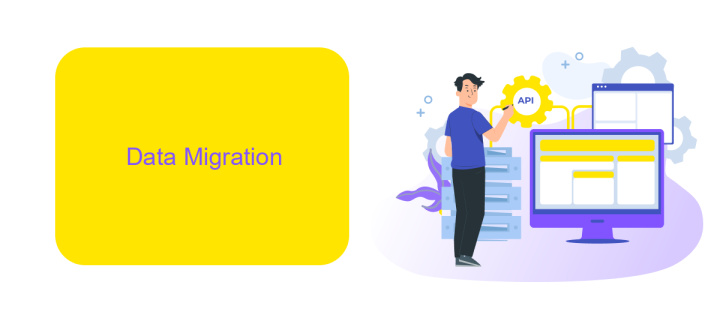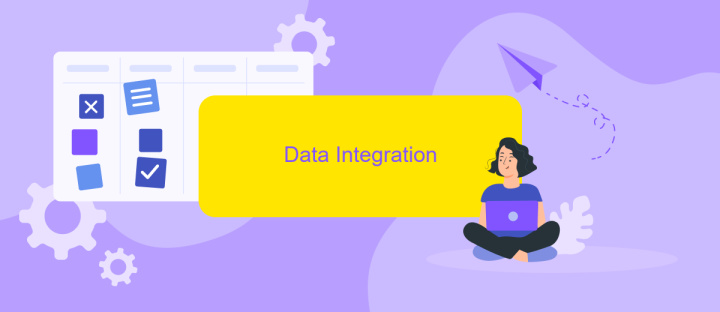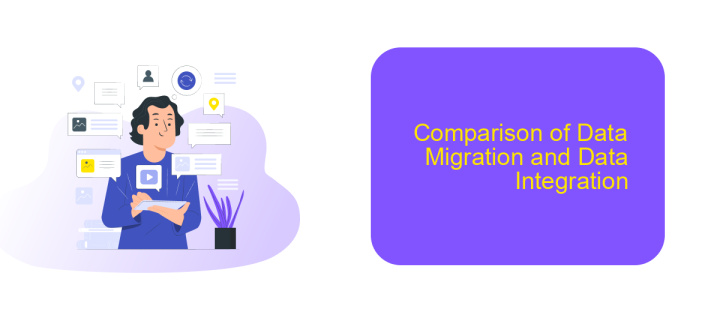Data Migration vs Data Integration
In today's data-driven world, organizations frequently face the challenges of data migration and data integration. While data migration involves transferring data from one system to another, data integration focuses on unifying disparate data sources into a cohesive view. Understanding the differences and applications of these processes is crucial for optimizing data management and ensuring seamless operations.
Introduction
Data migration and data integration are two crucial processes in the realm of data management, each serving distinct purposes. Data migration involves transferring data from one system or storage to another, often during system upgrades or consolidations. On the other hand, data integration focuses on combining data from different sources to provide a unified view, which is essential for comprehensive analytics and decision-making.
- Data Migration: Moving data between systems.
- Data Integration: Combining data from multiple sources.
- Key Tools: Specialized software and platforms.
While both processes aim to enhance data utility, they require different strategies and tools. Services like ApiX-Drive facilitate seamless data integration by connecting various applications and automating data flows, thereby ensuring that businesses can efficiently harness their data for strategic insights. Understanding the differences and applications of data migration and data integration is vital for effective data management and leveraging technology to its fullest potential.
Data Migration

Data migration involves the process of transferring data from one system to another, which can include moving data between different formats, storage types, or computer systems. This process is essential when organizations upgrade their systems, merge with other companies, or need to consolidate data from multiple sources into a single repository. The primary goal of data migration is to ensure data integrity and minimize downtime during the transfer, while also maintaining the accuracy and consistency of the data being moved.
Effective data migration requires careful planning and execution. It often involves several stages, including data extraction, transformation, and loading (ETL). Tools like ApiX-Drive can facilitate this process by providing automated solutions for data transfer and integration. ApiX-Drive allows users to connect different applications and services seamlessly, ensuring that data is accurately transferred without manual intervention. This not only saves time but also reduces the risk of errors, making the migration process more efficient and reliable.
Data Integration

Data Integration is the process of combining data from different sources to provide a unified view. This process is essential for organizations that need to analyze data from multiple systems to make informed decisions. Data integration can be achieved through various methods, including ETL (Extract, Transform, Load), data virtualization, and data federation.
- Identify Data Sources: Determine which databases, applications, or data warehouses contain the required data.
- Extract Data: Use tools to extract data from these sources.
- Transform Data: Convert the data into a consistent format suitable for analysis.
- Load Data: Load the transformed data into a data warehouse or another target system.
- Monitor and Maintain: Ensure ongoing data quality and integration performance.
Tools like ApiX-Drive can simplify the data integration process by automating data transfers between various platforms. ApiX-Drive provides a user-friendly interface and supports numerous integrations, making it easier for businesses to manage their data flows efficiently. By leveraging such tools, organizations can save time and reduce the complexity involved in data integration.
Comparison of Data Migration and Data Integration

Data migration and data integration are two distinct processes that serve different purposes in managing data within an organization. Data migration involves transferring data from one system to another, often during system upgrades or consolidations. This process ensures that all data is accurately moved, maintaining its integrity and usability in the new environment.
On the other hand, data integration focuses on combining data from different sources to provide a unified view. This is crucial for businesses that rely on multiple systems and need to ensure that data from various sources is synchronized and accessible in real-time. Integration often involves continuous data flow, unlike the one-time transfer seen in migration.
- Data Migration: One-time process, involves moving data to a new system.
- Data Integration: Ongoing process, involves combining data from multiple sources.
- Data Migration: Ensures data integrity during system changes.
- Data Integration: Provides real-time data synchronization and access.
Choosing between data migration and data integration depends on the organization's needs. For instance, while migrating to a new CRM, a business might use a service like ApiX-Drive to integrate data from various existing systems, ensuring seamless data flow and accessibility during and after the migration process.
Conclusion
In conclusion, both data migration and data integration play crucial roles in modern data management strategies. Data migration focuses on transferring data from one system to another, often during system upgrades or consolidations. This process ensures that historical data is preserved and accessible in the new environment. On the other hand, data integration emphasizes the seamless combination of data from multiple sources to provide a unified view, enabling more informed decision-making and improving operational efficiency.
Choosing between data migration and data integration depends on the specific needs of an organization. For those looking to streamline ongoing operations and maintain real-time data flow, data integration tools like ApiX-Drive can be highly beneficial. ApiX-Drive facilitates the automation of data exchange between various platforms, ensuring that data remains consistent and up-to-date across all systems. Ultimately, understanding the distinct purposes and benefits of each approach allows businesses to implement the most effective data management solutions for their unique requirements.
FAQ
What is the primary difference between data migration and data integration?
When should I consider data migration?
What are some common challenges in data integration?
How can automation tools assist in data integration?
Is data migration a one-time process or ongoing?
Apix-Drive is a simple and efficient system connector that will help you automate routine tasks and optimize business processes. You can save time and money, direct these resources to more important purposes. Test ApiX-Drive and make sure that this tool will relieve your employees and after 5 minutes of settings your business will start working faster.

